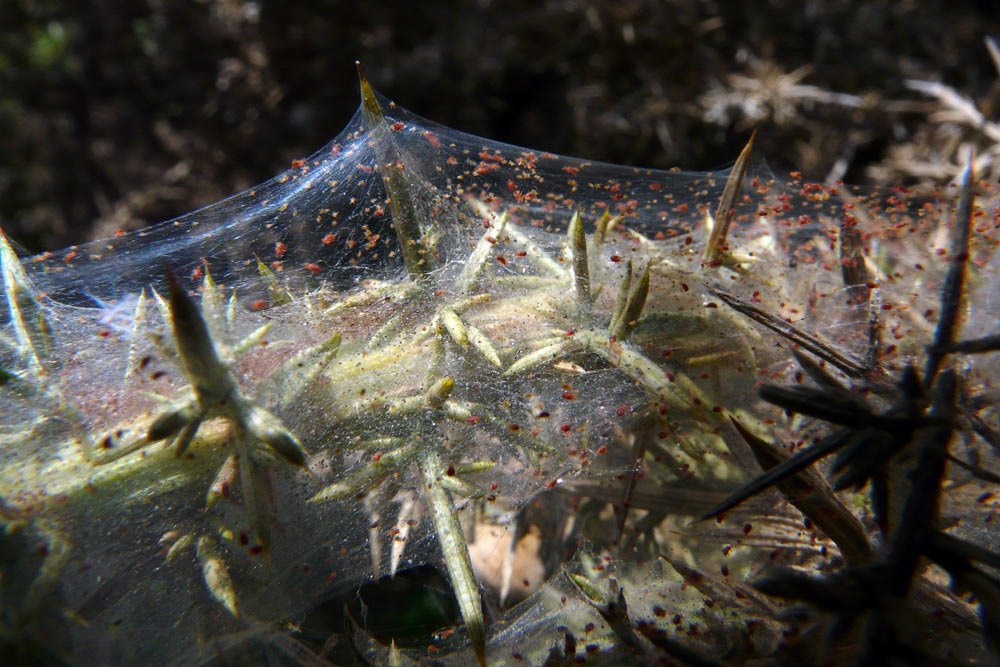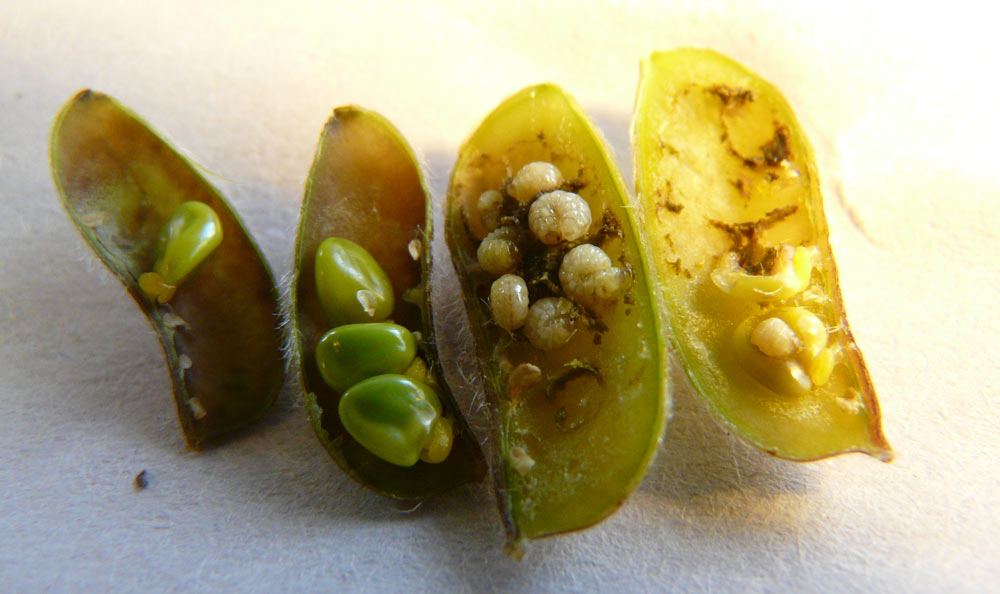Gorse was listed in the Restoration Plan as "very abundant and widespread", but appears to be considerably less common now. There is a patch and a number of mature scattered plants in the former back paddock (area 8). There is also a patch near Somerton Road in twin dams paddock which has been spread by slashing then partially controlled by spraying, and a smaller patch south of the homestead which has been partially controlled by cutting and painting. Melbourne Water seem to have done a good job of eliminating gorse from the banks of Moonee Ponds Creek (which is presumably where most of the plants were in the 1990s), but this will be an ongoing job as there is probably still a considerable infestation along the creek on private land upstream from the park.
Biological Control
| Common Name | Scientific Name | Released | Effectiveness |
|---|---|---|---|
| Gorse Seed Weevil | Exapion ulicis | 1939 | can destroy 12 to 55% of annual seed production |
| Gorse Spider Mite | Tetranychus lintearius | 1998 | limited by predation |
| Gorse Thrips | Sericothrips staphylinus | >2001 | may help to control seedlings in conjunction with grazing |
| Gorse Soft Shoot Moth | Agonopterix umbellana | 2007 | not yet known |
| Gorse Pod Moth | Cydia succedana | not yet |
The Gorse Seed Weevil and the Gorse Spider Mite were both common on plants in area 8 in November 2016, and there were many branches which had been killed presumably by the mites. However it is known that these two agents alone are not enough to prevent the weed from spreading.

